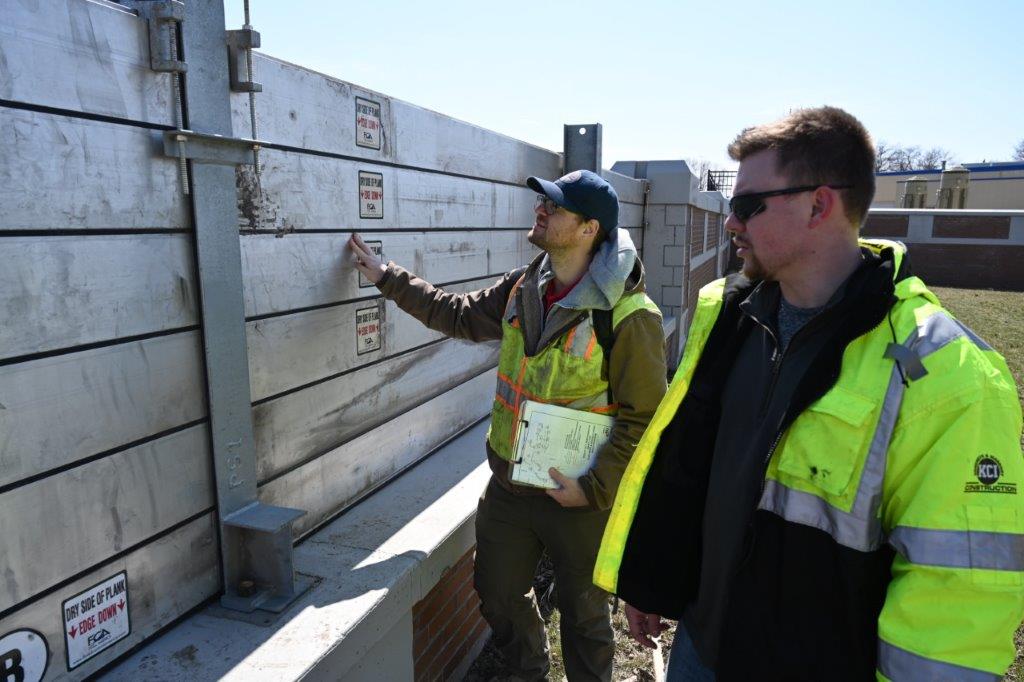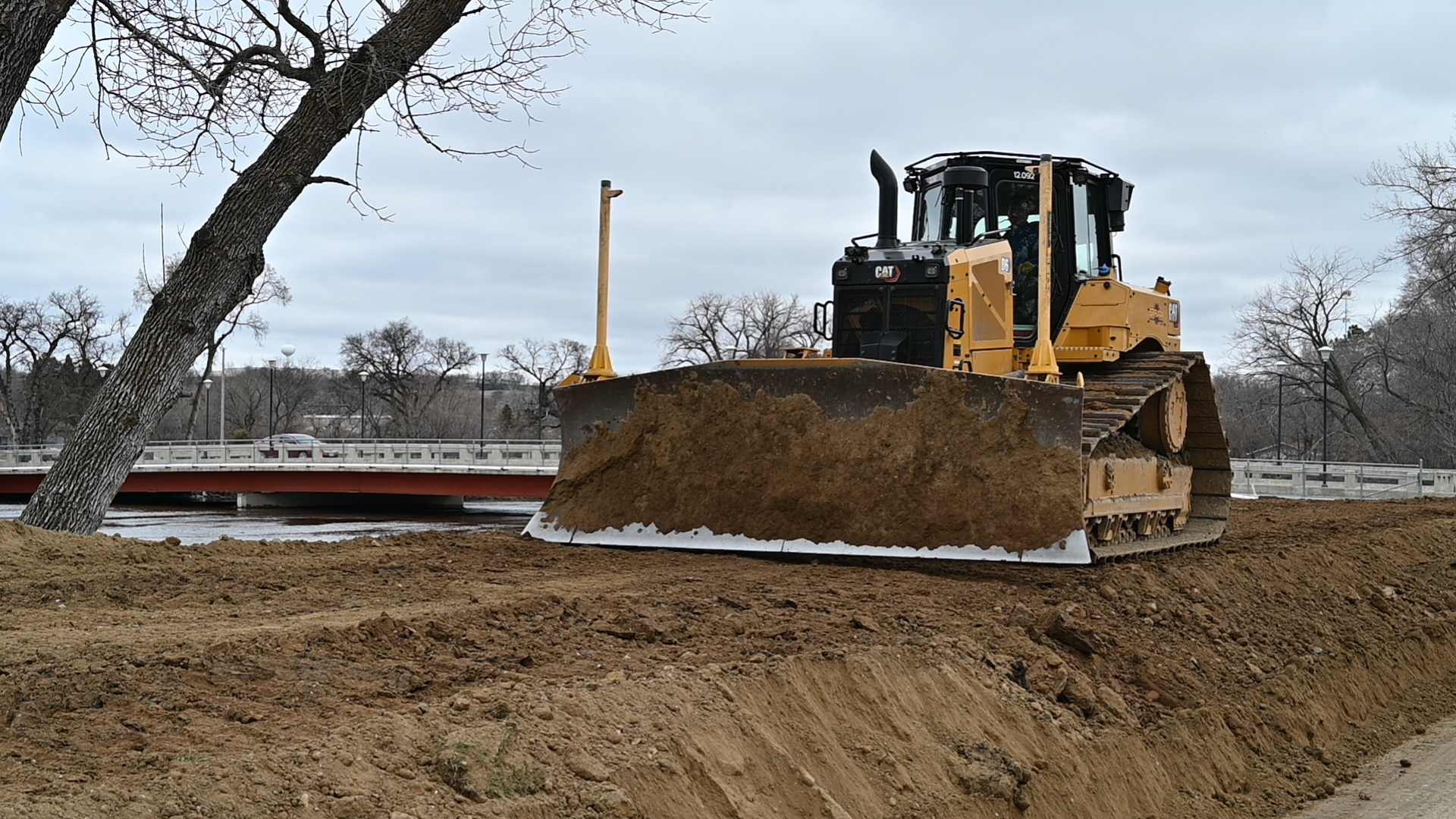The U.S. Army Corps of Engineers executes and delivers vital public emergency services to strengthen our nation’s ability to prepare, respond and recover from natural disasters or other emergencies within the United States and its territories. Emergency preparedness and response is primarily a local responsibility; however, the Corps may provide technical assistance and in instances when the nature of the disaster exceeds the capabilities of a state or Tribal interest, the Corps may provide direct assistance to save human life, prevent immediate human suffering or mitigate property damage.
Disaster Preparedness
The Corps of Engineers is prepared to provide immediate response and assistance during emergencies and disasters. The agency’s preparedness program includes staffing an emergency management organization; planning and training for events; maintaining adequate supplies, tools and equipment; and running an inspection program for both federal and non-federal flood risk management projects.
Type of Assistance Provided:
- Participation in emergency seminars and exercises when requested by state, local or tribal officials;
- Inspection of flood risk reduction projects constructed or repaired by the Corps and advisement to local officials of needed maintenance;
- Technical assistance for development of plans at the state, local and tribal level; and
- Upon request, inspection of non-federal dams and flood risk reduction projects.
Advance Measures
Advance measures provided by the Corps prior to imminent flooding can consist of activities performed to protect against loss of life and damage to public property from flooding.
Type of Assistance Provided:
- Strengthening of federal and non-federal flood risk reduction structures;
- Construction of temporary levees to protect life and public property (removal of these structures is a local responsibility);
- Channel clearance and dredging of federal projects to restore original design capacity; and
- Relieving threat of flooding from possible dam failures by dewatering the impoundment, controlled breaching or strengthening the structure.
Criteria for Corps Assistance:
- An imminent threat of unusual flooding must exist. The threat must be established by National Weather Service forecasts or by Corps determinations of unusual flooding from adverse conditions.
- A written request from a governor or Tribal spokesperson for Corps assistance is required. A request must be technically feasible and economically justified.
- Advance measures assistance will be in support of state, local or Tribal on-going or planned efforts. Non-federal interests must commit all available resources (i.e. manpower, supplies, equipment, etc.).
Emergency Assistance
The Corps may provide emergency assistance for flood response and post flood response activities to save lives and protect public infrastructure (i.e. public facilities/services) during or following a flood or coastal storm.
Exclusive assistance to individual homeowners and businesses, including agricultural businesses, is not permitted.
Emergency Operations assistance will be undertaken to supplement state, local or tribal efforts. Non-federal interests must commit all available resources. This includes manpower, supplies, equipment, funds, etc.
Flood fighting measures are applicable to any flood risk reduction structures or other areas that provide public service, regardless of whether it is federal, public or private.
The Corps has no authority under Public Law 84-99 to reimburse local entities for costs of their own emergency activities.
Flood Response
Type of Assistance Provided:
- Assist in search and rescue operations;
- Furnish technical advice and assistance;
- Provide emergency repairs to levees and other flood control projects; and
- Furnish materials such as sandbags, polyethylene sheeting, lumber, pumps or rock for stabilization when the Corps is actively participating in a flood fight.
If the Corps is not actively participating in a flood fight, government supplies may be furnished only if local resources are exhausted or will be exhausted. Under such circumstances, supplies will be replaced in kind or paid for by local interests. All unused stock should be returned or reimbursed to the government at replacement cost. Corps assistance terminates when the emergency is over (when flood waters have receded within top of bank or some other predetermined stage).
Post Flood Response
Authority to perform post flood activities immediately after a flood or coastal storm is provided by Public Law 84-99, as amended. Corps assistance must be required immediately and is limited to major flood or coastal storm disasters resulting in life-threatening or property-damaging situations.
Type of Assistance Provided:
- Furnish technical advice and assistance.
- Clearance of drainage channels, bridge openings or structures blocked by debris deposited during the event.
- Clearance of blockages or critical water supply intakes and sewer outfalls.
- Debris removal necessary to reopen vital transportation routes.
- Temporary restoration of critical public services or facilities.
- Identify hazard mitigation opportunities.
Criteria for Corps Assistance:
- Assistance must be supplemental to state, local or Tribal efforts.
- Requires written request from a governor or Tribal spokesperson.
- Corps policy requires local interests to furnish the following items of cooperation and assurances prior to the undertaking of any work: (1) provide without cost to the United States all lands, easements and rights-of-way necessary; (2) hold and save the United States free of damage due to the authorized work, exclusive of damages due to the fault or negligence of the United States or its contractor; and (3) if feasible, operate and maintain emergency work or remove temporary work constructed by the Corps.
Additional Emergency Operations
The Corps may rehabilitate flood risk reduction structures damaged or destroyed by floods. Within specific guidelines, the Corps may be authorized to provide emergency drinking water to communities confronted with water supply problems associated with drought or a contaminated water source.
How to Obtain Help
Local emergency management officials should contact the proper person at the state level, and, if required, the state will contact the Corps of Engineers. The Corps has appointed emergency operations managers for each Corps district. Each manager is responsible for maintaining an emergency organization of trained specialists. Most important, however, each district has a single point of contact for all emergency activities.